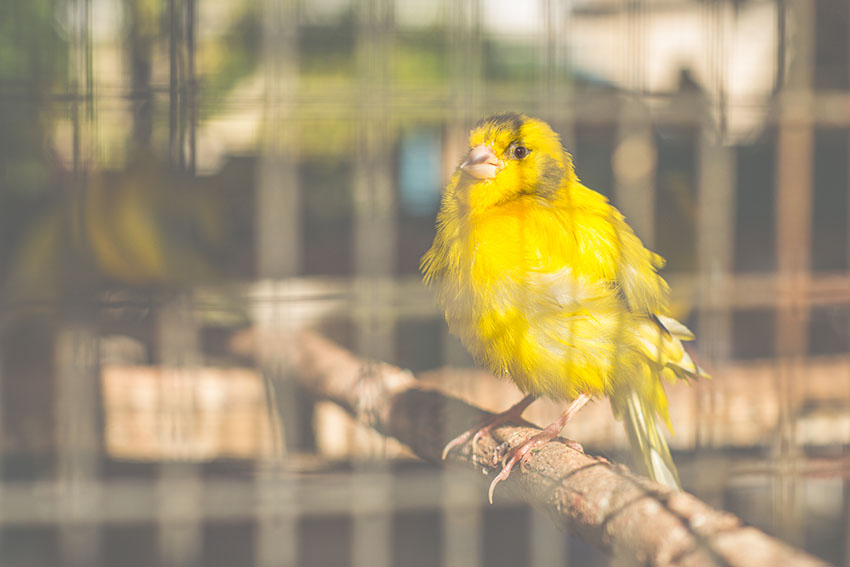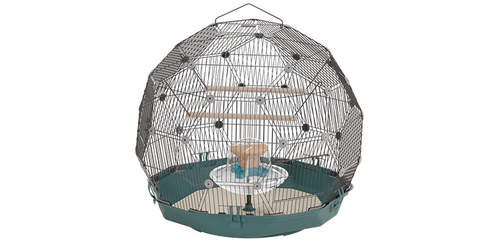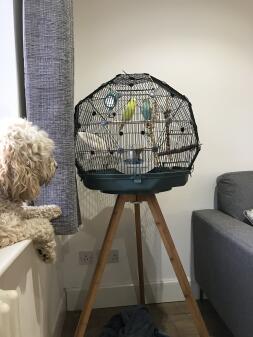A thorough cage-clean should be carried out once a week, with a few daily checks to keep up the cleanliness.
Weekly clean-out:
- The plastic contents of the cages should be cleaned with hot water. If there's a lot of soiling from dried droppings, soak the accessories for a few minutes and then scrub them with a sponge.
- Wipe the outside of the cage with a wet cloth, cleaning any dried-on bits with a non-wire brush or sponge (to avoid scratching the paint on the wire).
- You can use a pet-friendly detergent if hot water alone isn’t getting the job done. This extra bacteria-blasting touch is always needed if you’re cleaning the cage in the aftermath of an outbreak of disease; and you should also thoroughly clean any antique or second-hand cage you decide to use.
- As an alternative to bird-safe detergents, food dishes and other plastic items can be zapped in a dishwasher.
- Dry the dishes thoroughly before adding fresh food, as the smallest trace of damp can cause seed to rot, which in turn can make your birds ill. Leave the bowls standing for half an hour after drying, if possible.
- Buy a duplicate set of bowls and trays, so that the birds are not left foodless while the other set is being washed and dried.
- Empty and clean the bottom tray, and line it with fresh paper or coarse sawdust.
- Sweep up any seed husks, food or feathers that have escaped the cage during the week.

Cages need cleaning regularly
Daily clean cage check:
- Remove any droppings that have glued themselves to bars, perches or bowls.
- Remove any uneaten fresh food.
- Give the birds fresh water (at least once every two days).
This is all well and good, but how will your birds react to all this scrubbing and general maintenance? The fact is that new birds are always nervous, and will need to get used to your intruding hand (see Handling in the Keeping Pet Finches section of this guide).
Once your finches or Canaries view your hand as little more than a harmless creature or mobile perch, cleaning perches and bars on a daily basis will be no problem. Getting them to this stage takes a little time, and it’s a good idea to leave out the daily cleaning routine and stick with the weekly one in the early days, to minimise the stress.
Monthly cage checks
- Examine cage attachments - cuttlefish bone clips, swings, bells, etc - to make sure they’re still secure, and that no sharp edges or toe-snagging holes have developed.
- Rearrange the furniture - put new perches in, and, if you have a sufficiently large cage, rearrange the sticks so your birds have somewhere new to perch (but always keep a perch at each end of the cage). Bells and swings can be hung from different places too, and if you have any bird toys, replace them with something new.
- Check food bowls and water containers for wear and tear. If there are any cracks or worn bits in which bacteria or mites might take up residence, replace them.
- If you are able to transfer your bird to another cage, or if you have reached the stage where your Canary can be let out to flap around the room, wash the entire cage in hot soapy water, rinsing it thoroughly afterwards.






Comments
There are no comments just yet